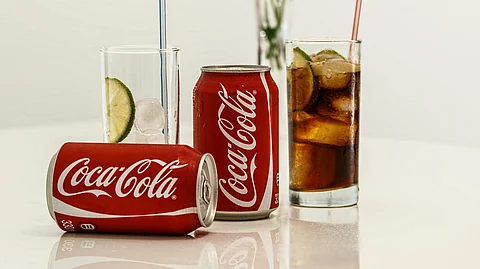Trump Claims a Sweet Switch at Coca-Cola—But Does Cane Sugar Make a Difference?
In a recent announcement, Donald Trump claimed that Coca-Cola has agreed to switch its key sweetener from high fructose corn syrup (HFCS) to cane sugar, touting it as a "better" alternative. This statement—like many from his administration—has left Americans both surprised and skeptical. Trump asserted that, following several discussions, Coca-Cola will now use cane sugar in its beverages instead of HFCS, which he believes is a healthier choice.
However, Coca-Cola has not released any official confirmation regarding the switch. Still, this claim has sparked public interest and raised an important question: Is cane sugar really better than high fructose corn syrup?
The Truth: Is Cane Sugar Healthier?
The answer is both yes and no. If you're judging based on taste and texture, many consumers do prefer cane sugar. In fact, Coca-Cola made with cane sugar is already available in the U.S.—imported from Mexico and commonly referred to as “Mexican Coke.” Many American consumers prefer this version, noting that it tastes smoother and lacks the lingering sweetness that HFCS leaves behind.
But when it comes to health, the truth is more nuanced. Is cane sugar better than HFCS? Not really. Is it worse? Also, no.
The Chemistry Behind the Sweeteners
Cane sugar, also known as sucrose, is made of glucose and fructose molecules bound together to form a disaccharide. It's extracted primarily from sugarcane or sugar beets—hence the names cane sugar or beet sugar.
In contrast, high fructose corn syrup is made from corn starch. It typically consists of about 60% fructose and 40% glucose, but the two are unbound. HFCS is sweeter than cane sugar, more syrupy in texture, cheaper to produce, and has a slightly longer shelf life—making it more attractive to large-scale manufacturers.
Nutritional Breakdown
A standard 12 oz (355 ml) can of Coca-Cola in the U.S. contains carbonated water, HFCS, natural flavors, preservatives, and a small amount of caffeine. Each can contains about 39 grams of sugar, all from HFCS.
Both sucrose (cane sugar) and HFCS provide approximately 4 kilocalories per gram, meaning the total sugar content contributes about 156 kcal. However, due to labeling conventions and rounding rules, the can is marked as containing 140 kcal.
Nutritionally, both sweeteners are virtually identical in terms of calories and their effect on the body. Fructose in HFCS may be more rapidly absorbed, but that doesn’t make it healthier. In fact, neither option is "healthy".
Health Risks of Sugary Beverages
Sugary drinks like Coca-Cola—regardless of whether they’re made with HFCS or cane sugar—are associated with obesity, insulin resistance, metabolic syndrome, and other health problems. The U.S. already leads the world in obesity rates, driven largely by the widespread availability of high-calorie, nutrient-poor foods and beverages.
So, Does the Switch Matter?
For Coca-Cola, switching to cane sugar could mean higher production costs. For consumers, it might mean enjoying the taste of Mexican Coke without paying for imports. But in terms of health? There is no real benefit.
If anything, the conversation should be about reducing sugar consumption altogether, not simply swapping one form of sugar for another. Instead of pushing for superficial changes, the focus should be on encouraging healthier choices, such as low-sugar or sugar-free beverages.
Trump’s announcement may make headlines, but the switch from HFCS to cane sugar is largely cosmetic. It does little to address the real issue: the overconsumption of added sugars in the American diet. The move may please some taste buds, but it does nothing to make Coca-Cola—or sugary beverages in general—healthier.
(Rh/Dr. Shubham Halingali/MSM/SE)


